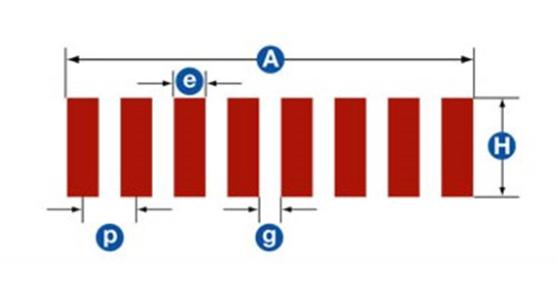Summary of 4 Methods to Choose Your Right Phased Array Transducer
The article discusses modern phased array transducers used in industrial non-destructive testing (NDT). These transducers, made from piezocomposites, vary in type, frequency, number of elements, element size, and active aperture to suit specific applications, especially in sectors like aerospace and energy. The frequency range typically spans 2-10 MHz, balancing penetration and resolution. More elements provide better beam steering and scan coverage but increase cost. The article emphasizes selecting cost-effective probes based on accuracy, size, and durability for diverse inspection needs, with NDT-KITS offering a broad range of quality phased array transducers.
Parts used in the Phased Array Transducer Selection and Application:
- Piezoelectric ceramic segments
- Polymer matrix
- Plastic shoe (zero degrees wedge/delay line)
- 1D linear probes
- 2D matrix probes
- TRL probes
- Phased array elements (ranging from 16 to 256 elements)
Introduction
Modern phased array transducers for industrial NDT are usually made from piezocomposites, which in turn consist of many small thin segments of piezoelectric ceramic embedded in a polymer matrix. Phased Array Transducer comes in a wide variety of shapes, sizes, frequency ranges, and a number of elements. This technology is most often used to control the quality of welds and detect cracks in a variety of industries: aerospace, energy, petrochemical, in the production of continuously cast metal billets and pipe fittings, in the construction and maintenance of oil pipelines and metal structures. Phased arrays are also used to obtain a residual wall thickness profile for corrosion control.
It can seem to be a challenge to select the Phased Array Transducer according to the required application. That’s why we have provided some parameters that can help you choose a suitable transducer. These methods are as follows:
Type:
Phased Array Transducers are mostly of type angle beam. They are created to work with the help of a straight plastic shoe also called zero degrees wedge, or plastic wedge, or delay line. Type direct contact and type immersion transducers are in use for inspection purposes. Some of the types of phased Array Transducers are 1D linear probes, 2D matrix probes, and TRL probes.
Frequency:
Ultrasonic testing is typically performed in the 2 to 10 MHz frequency range, so most Phased Array probes will operate in this frequency range. Higher or lower frequency converters are also available. As with conventional transducers, the penetrating power of phased array transducers improves with decreasing frequency. As the frequency increases, resolution and focal sharpness improve.
Number of Elements:
As a rule, phased array converters have from 16 to 128 elements. Some transducers can have up to 256 elements. Increasing the number of elements improves the focusing and beam steering performance and the greater the scan coverage. At the same time, the cost of instrumentation increases. Each element is excited separately, but their impulses form one wave front. Thus, the dimensions of these elements are considered as an active or controlled direction.
Size of Element:
The smaller the element size, the better the beam steering capability. However, if a larger area is covered, more elements will be required, which will affect the price of the converter but also increase the productivity.
Active aperture:

The active aperture is the total size of the active part of the phased probe.
The aperture size is defined as follows:
A=(n-1)*p+e, where
n is the number of elements in a phased probe;
p is the distance between the centers of two adjacent elements;
e – element width (usually e<λ/2).
Conclusion
The ultimate goal is to provide information to the readers to find the most cost-effective probe that meets accuracy, size, and durability requirements. Phased array ultrasonic systems can be used in almost any type of inspection where traditional ultrasonic flaw detectors are used. Professionals using Probes Array Transducers must be fully informed of the unique parameters of every ultrasound probe array. Depending on the requirements of the machine and the inspection procedure, experts will require to take into consideration the best available probe to perform the inspection successfully. NDT-KITS company has exceptional quality and range of Probes Array Transducers according to your needs, even application is on the most technically difficult machines.
